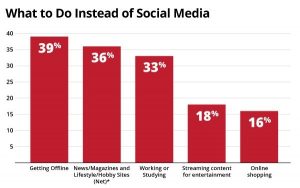— October 4, 2017

3dman_eu / Pixabay
Many enterprises use cross functional teams in their organizations. Such teams combine a broad range of functions and skillsets into a single, agile business unit that can tackle a variety of challenges. After all, when you have people representing your business’ critical functions sitting around the table, any issues they face can be approached in a holistic and systematic fashion rather than each “silo” looking at a problem from their point of view and then handing it off to the next group.
However, as many companies have discovered, cross functional teams have more than their fair share of challenges as well. The challenges that keep cross functional teams from working well generally come in two types—structural obstacles and skill limitations.
- Structural Challenges. Every function on a cross functional team has its own goals. If these goals don’t align, then the team won’t come together successfully. Also, there may be confusion regarding team roles and decision authority—who has the final say and makes judgement calls for the team regarding business activities?
- Skill Limitations. Team members need to possess strong communication skills to better coordinate activities. Also, when conflicts arise, team members need to be able to use their influencing and negotiation skills to find a suitable solution that benefits the team and the company as a whole.
This is where training for cross functional teams becomes important. Using training, cross functional teams can improve productivity, team member satisfaction, and customer/client satisfaction by closing skills gaps and resolving questions of team authority/responsibility.
At least, that’s the theory. All too often, training consumes time and resources without altering employee behaviors.
To establish the return on investment (ROI) of the time, money, and resources expended on training, and to gain buy-in and commitment of cross functional team members and senior managers for the training, HR needs to be able to demonstrate that the training works.
How can Human Resources measure the return on investment for the training of cross functional teams? While some might say that measuring the ROI is difficult, there are actually several ways to accomplish this.
1: Tracking Key Performance Indicators (KPI) Before and After Training
Tracking productivity as measured by the achievement of KPIs is a basic strategy for measuring ROI. By assessing the output of a cross functional team before and after the training is finished, human resources and line managers can begin to quantify the impact the training had.
Additionally, collecting data prior to the start of training helps training and development professionals determine what type of training is necessary. This can help avoid asking employees to attend courses that waste time and resources.
The challenge here is that, because you will be measuring the performance of a cross functional team, you will need to ensure performance indicators for which the entire team will be held accountable have been identified and agreed to.
2: Employee Engagement Pre- and Post-Training
Employee engagement can play a significant role in determining cross functional team productivity. According to Gallup, “the percentage ‘engaged’ among the U.S. working population has remained at around one-third (currently 33%).” Additionally, workgroups who have high employee engagement “outperform those with lower scores on every type of performance metric: revenue, profitability, productivity, customer experience, safety, healthcare costs, etc.”
So, while employee engagement may be more of an indirect measurement of the ROI of cross functional team training, it can be valuable for predicting the long-term benefits of using training for cross functional teams.
One way to track employee engagement before and after training is to use employee engagement and retention surveys. Using employee surveys before and after training can establish whether training is having the desired impact on morale—thus helping predict impacts on cross functional team productivity and team member retention.
3: Assessments of Team Structure and Skills Pre- and Post Training
While employee surveys can assess the engagement of individual team members, OnPoint’s GRID survey is a tool designed to assess the extent to which the members of a cross functional team believe that the structural and skill fundamentals needed for success on the team are in place. The GRID survey collects team member feedback about:
- Shared goals
- Decision authority
- Interpersonal relationships and trust
- Processes for decision-making and problem solving
- Success factors and recommendations for improvement
You may have noticed that the feedback collected can be related to the structural and skills challenges listed earlier. By getting feedback from the individuals responsible for executing plans and initiatives, it’s possible to gain insights into what is holding the team back and what the team is already doing well.
This information can be used to customize training programs to better address high-priority issues being faced by the team.
4: Customer/Client Satisfaction Surveys
Another important measure of how well cross functional team training has worked would be the satisfaction of the internal and/or external customers/clients that the team serves. If internal customers or external clients are not receiving quality products or service, that may be an indicator that the cross functional team is not performing at a high level.
Customer/client satisfaction surveys help establish the overall performance of the cross functional team as perceived by independent stakeholders (i.e. the internal or external clients). Surveying customers before and after the cross-functional training is completed can help establish what training is necessary and if the training has had an impact on the customer experience.
If customers of the team are more satisfied after the training than before the training, you’ll know that the team’s performance has improved and that the training is likely to have played a role in achieving that outcome.
Keep Measuring Cross Functional Team Performance
Over time, employees forget training lessons, new personnel join the team, and others cycle out. Because of this, it’s important to periodically measure the performance of your cross functional teams—not just immediately after training.
Continuously measuring team KPIs, team member and customer satisfaction, and assessing team strengths and weaknesses with the GRID survey will help monitor team progress toward key goals and identify any additional training or refreshers that may be needed to keep the team operating at a high level. In addition, this data creates a backlog of information that can be used to reinforce the ROI for cross functional team training.
Business & Finance Articles on Business 2 Community
(109)







